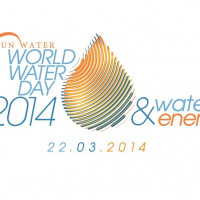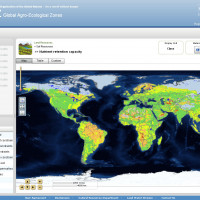Today I join bloggers, corporations, and citizens from around the globe in celebrating World Water Day, a day meant to highlight the importance of water. Food and agriculture are the largest consumers of water- up to 70% of the water extracted from rivers and groundwater are used for irrigation.
There are a number of ways that information technology is being leveraged to reduce and optimize water consumption in agriculture. The following are two World Water Day articles I came across that do an excellent job of articulating how. I’ve also included some excellent resources from the Food and Agriculture Organization of the United Nations (FAO).
Posts:
E-agriculture- World Water Day: ICTs provide wide ranging opportunities for the management of water as a resource, and for the management of information about water. Integrated systems allow information on topics such as water supply and replenishment, water quality, wetland ecosystem, usage, etc. to be integrated with other relevant information about the environment, society, and economics.
GBI Portal- World Water Day 2011: A Call for Innovation:Using ICT and IT systems can play a very powerful role in monitoring urban water management projects and systems. They hold the potential to assess, examine, and evaluate the availability of a community’s water systems.
Resources:
AquaStat: AQUASTAT is FAO’s global information system on water and agriculture, developed by the Land and Water Division. The main mandate of the programme is to collect, analyze and disseminate information on water resources, water uses, and agricultural water management with an emphasis on countries in Africa, Asia, Latin America and the Caribbean. This allows interested users to find comprehensive and regularly updated information at global, regional, and national levels.
Waterwiki.net: Wiki created by the Land and Water Division / Water Development and Management Unit of FAO.
AquaCrop: FAO software that is a crop water productivity model developed by the Land and Water Division of FAO. It simulates yield response to water of herbaceous crops, and is particularly suited to address conditions where water is a key limiting factor in crop production.
CropWat: A computer program for the calculation of crop water requirements and irrigation requirements based on soil, climate and crop data. In addition, the program allows the development of irrigation schedules for different management conditions and the calculation of scheme water supply for varying crop patterns. CROPWAT 8.0 can also be used to evaluate farmers’ irrigation practices and to estimate crop performance under both rainfed and irrigated conditions.


![Farming First: How can we manage environmental sustainability with economic viability? [Infographics]](https://foodtechconnect.com/wp-content/plugins/wordpress-23-related-posts-plugin/static/thumbs/2.jpg)



